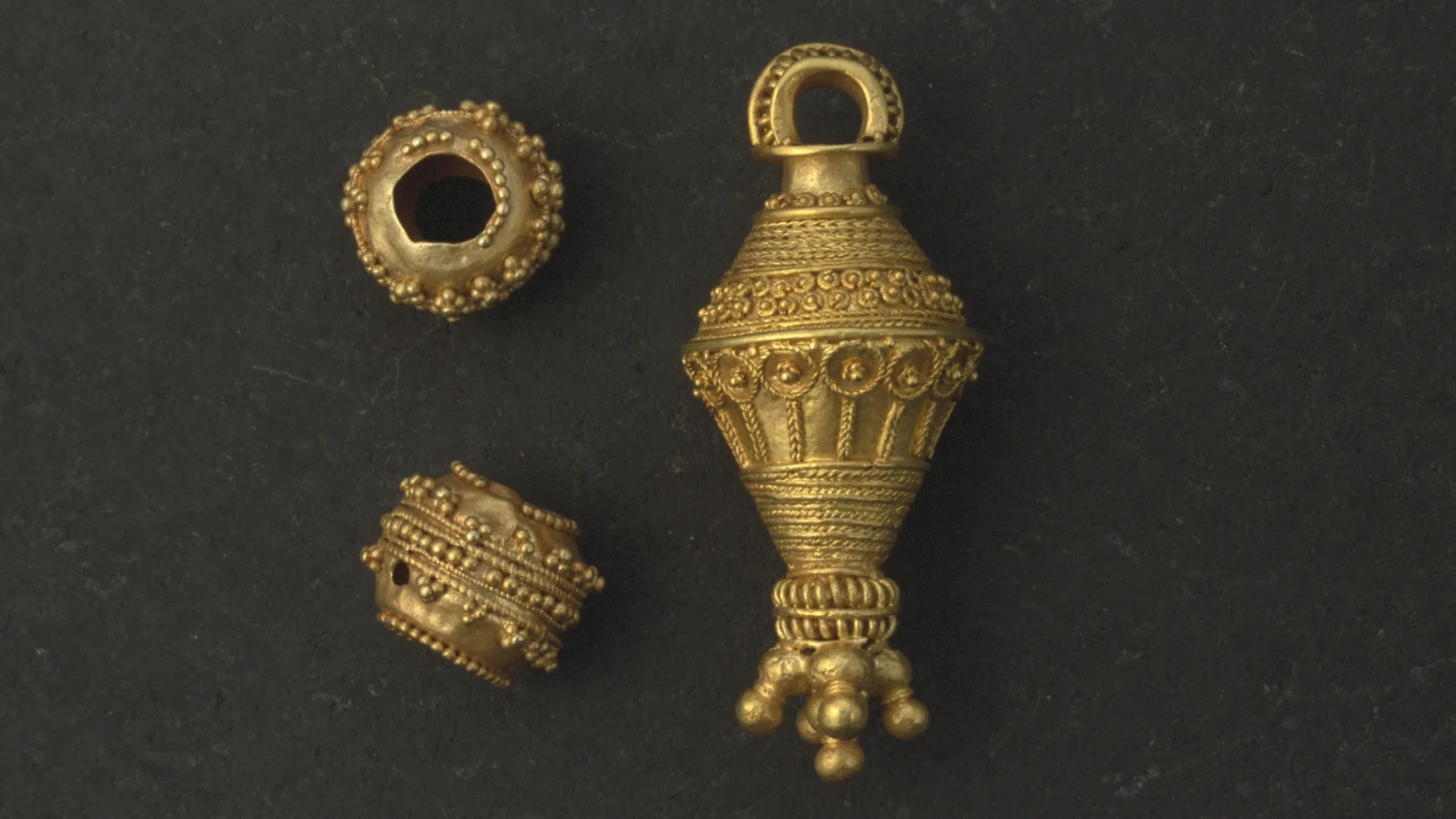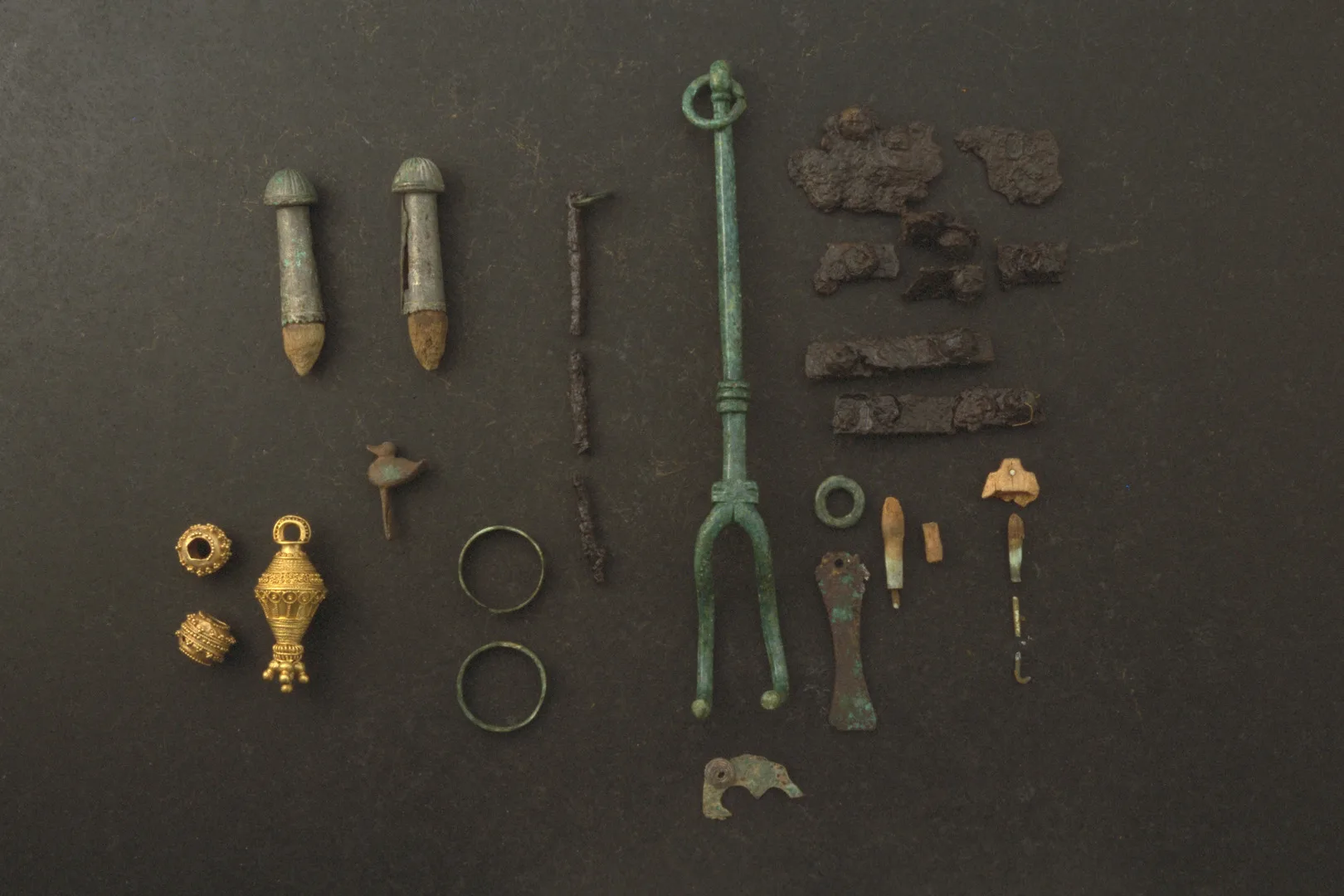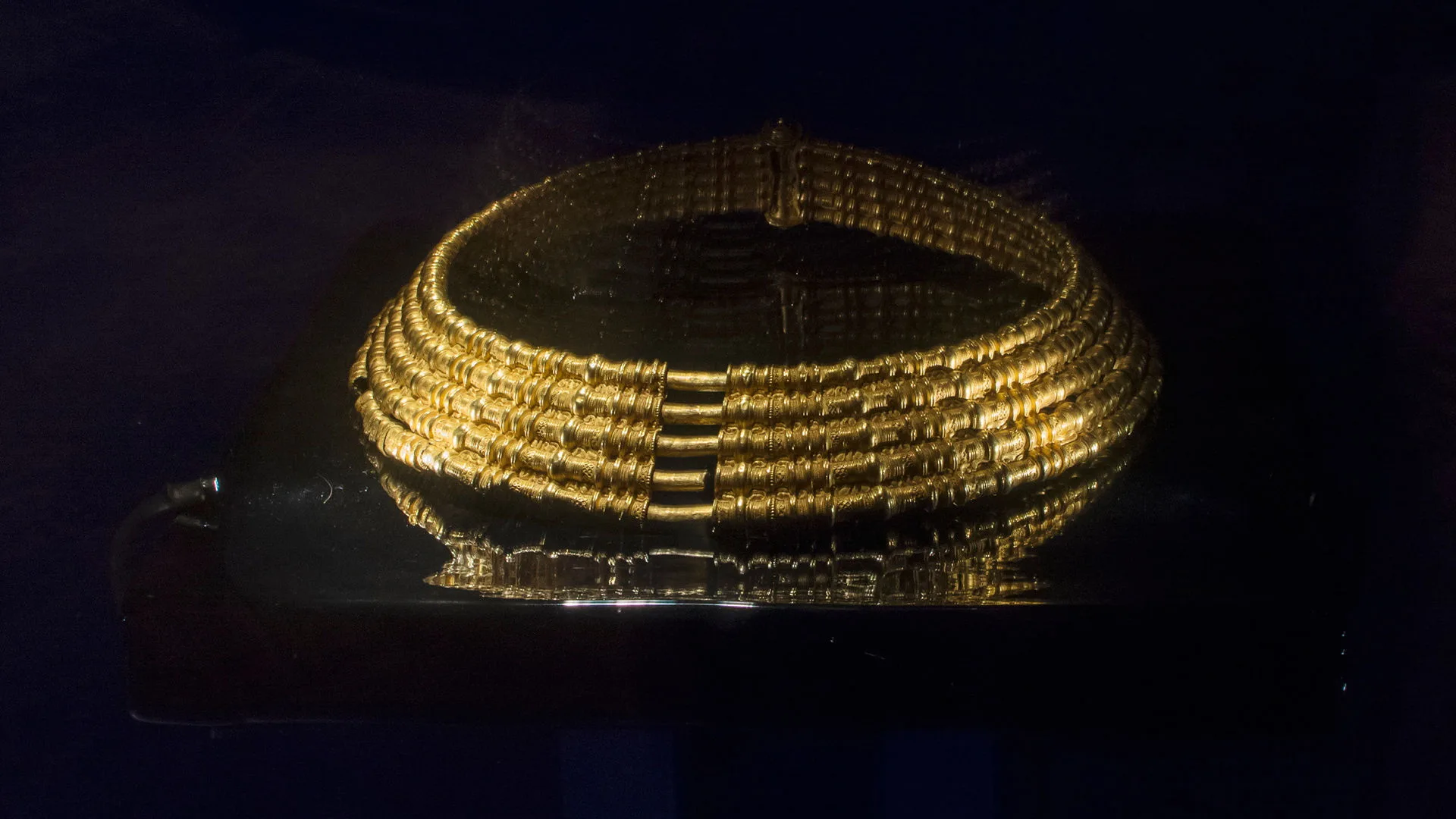A housewife’s jewellery
Bronze Age
1700 BC – 500 BC
Iron Age
500 BC – AD 1100
Viking Age
AD 800 – AD 1100

The housewife whose grave was mentioned, lived in a forested area where cattle farming formed the backbone of the local economy. It is possible that the gold for her jewellery came from the sale of hides to Roman military forces in continental Europe. The grave yielded items made of gold, copper alloy, wood, iron, and glass. The gold pendant and beads may have been given to the woman upon marriage, when she assumed responsibility for the household. A bronze key also symbolises her role as the lady of the house. Two decorated rings, made from copper alloy, were also found.
Among the grave goods were a glass spindle whorl and an iron spindle rod, indicating that she was expected to spin. A small bronze duck may once have adorned a wooden casket fitted with iron mounts.

The grave finds from Dalstorp
On view at Historiska museet in the exhibition Guldrummet





